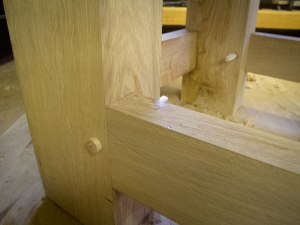Renting Welders Archives – Red-D-Arc Red-D-Arc
Welding For Oil Refineries and Gas Processing Facilities
Crude oil and natural gas must be processed before they can be used for energy production. It involves numerous steps in complex facilities that rely on welds to endure severe pressures, chemicals, and temperature swings.
The oil and gas downstream industry borders the limits of what’s possible. Oil refineries, gas processing facilities, and petrochemical plants are some of the most complex structures in our world, with many critical pieces of equipment and destructive processes that can cause devastating damage to personnel and the environment.
These processing facilities comprise numerous pipelines, heat exchangers, furnaces, pressure vessels, structural components, and other elements that must be welded with absolute structural integrity. If the weld fails, the production fails, resulting in huge capital loss and safety issues.
What Is Considered Downstream of Oil and Gas Industry
Refining crude oil and processing natural gas into products ready for consumers is the purpose of the downstream sector of the oil and gas industries. Once the crude energy products are explored and recovered (upstream) and transported to the refineries and processing plants (midstream), they are ready to be refined (downstream).
Depending on the type of processed energy product, processing plants can vary in size, refining methods, and components. But they also share critical equipment like the hydroprocessing reactors needed for hydrotreating or hydrodesulfurization (HDS).
The hydroprocessing reactors remove sulfur from natural gas and crude oil to reduce sulfur dioxide emissions from combustion engines in cars, ships, power plants, and aircraft. In addition, the HDS is a crucial step in refining petroleum because sulfur can destroy catalytic reforming units used to upgrade the octane rating of naphtha streams later in the refinery. So, the downstream sector of the oil and gas industry plays a vital role in our energy’s environmental impact and the produced fuel efficiency.
Welding Challenges In The Oil and Gas Downstream
Oil and gas processing plants have many critical elements and rely on each other to function correctly. But they all rely on weld integrity to keep the refinery running smoothly. However, welding these vital elements is anything but easy. For example, the hydroprocessing reactors we mentioned earlier are exposed to harsh chemicals under high pressures and varying temperatures. They must be made from special steels and welded with alloy filler metal that can withstand such conditions without corrosion.
Depending on processes like hydrotreating, hydrocracking, catalytic cracking, distillation in oil refineries, fractionation, sulfur removal, and separation of water from natural gas in gas processing facilities, various aggressive damage mechanisms can directly or indirectly affect the welds of the element where the process takes place.
Welds and base metals of the pressure vessels, pipes, furnaces, and heat exchangers are threatened by high-temperature hydrogen attack (HTHA), stress rupture, flue gas dew point corrosion, sulfuric acid corrosion, hydrogen diffusion from wet H2S damage, and tens of other damage mechanisms. Preventing weld cracking, corrosion, and hydrogen-related issues, takes a very specialized approach for each element of the processing facility.
For example, HTHA occurs in steels operating at elevated temperatures in hydrogen environments, like those in hydroprocessing reactors. HTHA can cause fissures, cracking and lead to significant loss of steel’s mechanical properties due to loss of carbides and formation of voids. However, certain Cr-Mo steels are not susceptible to HTHA, so the 2.25Cr-1Mo-0.25V steel alloy is commonly used for hydroprocessing reactors. But, welding this alloy is challenging due to weld cracking and re-heat cracking sensitivity and very stringent intermediate and post-weld heat treatment requirements.
Welding For Oil Refineries and Gas Processing Facilities
Crude oil and natural gas must be processed before they can be used for energy production, which involves numerous steps in complex facilities that rely on welds to endure severe pressures, chemicals, and temperature swings. The oil and gas downstream industry borders the limits of what’s possible. Oil refineries, gas processing facilities, and petrochemical plants are some of the most complex structures in our world, with many critical equipment and destructive processes that can cause devastating damage to personnel and the environment.
These processing facilities comprise numerous pipelines, heat exchangers, furnaces, pressure vessels, structural components, and other elements that must be welded with absolute structural integrity. If the weld fails, the production fails, which can result in huge capital loss and safety issues.
What Is Considered Downstream of Oil and Gas Industry
Refining crude oil and processing natural gas into products ready for consumers is the purpose of the downstream sector of the oil and gas industries. Once the crude energy products are explored and recovered (upstream) and transported to the refineries and processing plants (midstream), they are ready to be refined (downstream).
Depending on the type of processed energy product, processing plants can vary in size, refining methods, and components. But they also share many critical equipment like the hydroprocessing reactors needed for hydrotreating or hydrodesulfurization (HDS).
The hydroprocessing reactors remove sulfur from natural gas and crude oil to reduce sulfur dioxide emissions from combustion engines in cars, ships, power plants, and aircraft. In addition, the HDS is a crucial step in refining petroleum because sulfur can destroy catalytic reforming units used to upgrade the octane rating of naphtha streams later in the refinery. So, the downstream sector of the oil and gas industry plays a vital role in our energy’s environmental impact and the produced fuel efficiency.
Welding Challenges In The Oil and Gas Downstream
Oil and gas processing plants have many critical elements and rely on each other to function correctly. But they all rely on weld integrity to keep the refinery running smoothly. However, welding these critical elements is anything but easy. For example, the hydroprocessing reactors we mentioned earlier are exposed to harsh chemicals under high pressures and varying temperatures, so they must be made from special steels and welded with alloy filler metal that can withstand such conditions without corrosion.
Depending on processes like hydrotreating, hydrocracking, catalytic cracking, and distillation in oil refineries, or fractionation, sulfur removal, and separation of water from natural gas in gas processing facilities, various aggressive damage mechanisms can directly or indirectly affect the welds of the element where the process takes place.
Welds and base metals of the pressure vessels, pipes, furnaces, and heat exchangers are threatened by high-temperature hydrogen attack (HTHA), stress rupture, flue gas dew point corrosion, sulfuric acid corrosion, hydrogen diffusion from wet H2S damage, and tens of other damage mechanisms. Preventing weld cracking, corrosion, and hydrogen-related issues, takes a very specialized approach for each element of the processing facility.
For example, HTHA occurs in steels operating at elevated temperatures in hydrogen environments, like those in hydroprocessing reactors. HTHA can cause fissures, cracking, and lead to significant loss of steel’s mechanical properties due to loss of carbides and formation of voids. However, certain Cr-Mo steels are not susceptible to HTHA, so the 2.25Cr-1Mo-0.25V steel alloy is commonly used for hydroprocessing reactors. But, welding this alloy is challenging due to weld cracking, re-heat cracking sensitivity, and very stringent intermediate and post-weld heat treatment requirements.
The Challenges of Welding Critical Equipment
Welding critical equipment of oil refineries, petrochemical plants, and gas processing facilities has a lot of challenges. Many engineering fields come together to solve these issues and push what’s possible in these industries. As the example above shows, solving one problem, like HTHA, can create a more challenging welding operation. Institutes like the American Petroleum Institute make standards and operating practices and continue to push for improved safety and equipment efficiency.
Hot tapping is an additional welding challenge in oil refineries and processing facilities. Hot tapping refers to welding the operational pipeline or equipment without shutting down the process equipment. To perform hot tapping, it’s necessary to meet specific OSHA and API safety codes and practices. Hot tapping is only performed when the refining process cannot be stopped or if the shutdown is impractical.
Welding Processes Employed In the Oil and Gas Downstream
Since the processing equipment is highly diverse downstream of the oil and gas industry, numerous welding processes are employed in the shop and on-site environments.
Fabricating pressure vessels often require submerged arc welding (SAW), while many details like nozzles and fittings are welded using gas tungsten arc welding (GTAW), flux-cored arc welding (FCAW), and shielded metal arc welding (SMAW). In addition, pipes and pressure vessels require internal surface weld overlay with non-corrosive alloys, otherwise known as cladding, performed using automated GTAW cladding equipment.
Heat exchangers can be manufactured on-site or in the fabrication shop. Due to the nature of circumferential tube-to-sheet metal welds requiring maximum accuracy, heat exchangers are welded using the GTAW process.
On-site repairs are often performed using SMAW and GTAW depending on the type of repair, required weld accuracy, and the welded material.
Post-welding heat treatment (PWHT), interpass temperatures, dehydrogenation heat treatment, intermediate stress relieving, and other heat-related processes rely heavily on induction heating equipment to ensure a sound weld. The Miller ProHeat Rolling Inductor is an excellent example of a highly efficient and safe induction heating system for fabricating pipes for oil refineries and petrochemical processing plants.
Benefits of Welding In The Oil and Gas Downstream
Without welding, there would be no oil refineries and gas processing facilities. But welding has certain innate benefits for the whole downstream of the oil and gas industry.
Speed
Any failing element of the oil refinery means a significant bottleneck in production which will cause dramatic capital loss. However, skilled welders can quickly repair leaks and cracks using portable and quick-to-set-up welding equipment. Welding minimizes downtime and helps to quickly get the facility up and running to its maximum capacity. Oil refineries and gas processing facilities operate on relatively tight margins, so streamlined repair and maintenance welding procedures positively affect the bottom line.
Versatility
Welding is a versatile metal joining technology with numerous processes where each can be best suited for specific refinery equipment. The universal nature of welding processes allows the joining of hundreds of metal alloys and all joint configurations in various environments for equipment with highly varied service conditions. No matter the complexity of the task, at least one welding process can be configured to create welds that pass the inspection and meet code criteria.
Efficiency
The efficiency of welding technologies affects the success of any oil refinery or gas processing facility. The cost to build, repair, and maintain pipelines, pressure vessels, furnaces, heat exchangers, and other critical equipment is significant. Automated welding equipment can cut costs and improve the time-to-completion of most equipment fabricated in the workshop, and some that are constructed on-site. Welding positioners, motorized turning rolls, pipe bevelers and cutters, orbital welders, and other automated equipment drastically improve welding efficiency and reduce the cost of the finished product.
Precision And Joint Quality
Weld precision and joint quality are crucial for all critical elements of oil refineries and gas processing facilities, especially pressurized equipment and pipelines. Large vessels operate at extreme pressures containing aggressive chemicals at high temperatures inside.
Therefore, creating precise and strong joints is paramount. Using automated fit-up bed tank rollers, it’s possible to precisely align the pressure vessel joint before welding with the SAW or another welding process using a mechanized longitudinal seam welder. Joint accuracy is essential in many other instances, and welding technologies can solve all of them. Some welding processes, like the GTAW, are inherently more precise, but the process selection comes down to the material, joint type, costs, and operational conditions of the welded element.
Work With The Best Equipment – Rent Or Lease From Red-D-Arc
While welding is one of the cornerstones of the downstream oil and gas industry, its benefits can only be fully harnessed with quality welding equipment. To meet stringent code requirements and pass weld inspection, the welding power sources must possess advanced features and impeccable arc quality. In addition, automated welding equipment needs to be configured for precise operation and be maintained for maximum reliability.
Red-D-Arc has a massive fleet of top-notch welding, cutting, and heating equipment for manual and automated welding.
Contact us today, and let’s discuss your equipment needs, whether you are a contractor maintaining and repairing structures of the downstream oil and gas industry or working on building critical equipment for these facilities.





